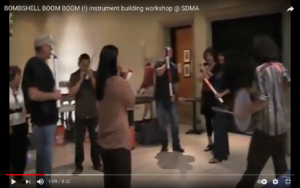Carol has a book about managing large volumes of email, titled Hamster Revolution. In order to manage email, the authors of the book (Michael Song, Vicki Halsey, and Tim Burress) recommend using the same filing system for email that you use for all other files. To make filing easier, they further suggest using four broad filing categories: clients, output, team, and admin.
I liked the idea of using the same categories for email that I use for my other files. Of course, that raised another issue: I need to use the same filing categories throughout my computer that I use in my physical files in my filing cabinets. I also liked the idea of using just a few broad filing categories. And that raised another issue: those of us who work in congregations don’t really have clients, so that won’t work as a filing category. After a good bit of thought, I decided to use the following four big filing categories: 1 People including people in the congregation, and other stakeholders; 2. Output, including programs and ministries; 3. Team, including paid staff, volunteer staff, and lay leaders; and 4. Administration.
But which of my existing file headings should go into which of the four big categories? For example, do I put my files on rites of passage under Output, since they are a ministry of the congregation, or do I file them under People, since rites of passage are for specific people? In the book, Song, Halsey, and Burress point out that the first three categories can be arranged in order of importance, with the most important category at the beginning of the list:
People and Stakeholders
Output (programs, ministries, etc.)
Team (staff, volunteers, lay leaders, etc.)
Administrative
— where Team creates Output which serves and guides People and Stakeholders (with Administration as a necessary foundation to everything else). Now, when trying to decide between two filing categories, use the one highest up in the list. Thus, my files on rites of passage could go in Output, but I’m going to put them into People because that’s higher on the list.
I hope I’m making this clear, although I’m trying to explain this concept in a short blog post, while in the book this takes up an entire chapter. My most important point is this: although the filing categories proposed in Hamster Revolution are designed for the for-profit business world, I think they can be readily adapted to the world of congregations, using the modifications I suggest above. Of course, if you want, you can go read the book, or ask me questions via a comment. And for further clarification, I’ll give my complete filing hierarchy below as an example.
Continue reading →

